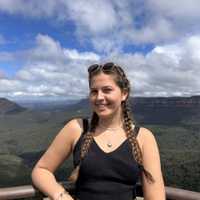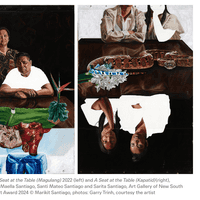


Ever wondered why whales and dolphins periodically commit suicide with mass beachings? Often it’s because they can’t stand the noise we are making. Imagine the loudest pub band or noisiest cafe that’s ever battered your ears to a pulp and amplify it till your brain bleeds, to get some idea of the aural horrors of junk noise reverberating through the aquascape. Dr Megan Kessler from the Environment Defenders Office NSW dropped into the studio this week for a chat about a new documentary film called Sonic Sea which explains that cetaceans are exquisitely sensitive to sound, which they use to navigate, communicate and “see” their underwater world. Over the past one hundred years human activity has increased to the point where the music of the oceans has been completely disrupted by our cacophonous shipping activity, military testing, and even leisure activities. The evidence is mounting that the the torture and stress of chronic sound pollution is driving its traditional inhabitants right out of the water – and affecting breeding and socialising. As if navigating through all the pollution we are dumping in the ocean wasn’t enough! Megan did her PHD on the impact of whale watching tourism (finding it mostly positive), so she’s always been passionately invested in the fate of these intelligent sentient beings. The EDO screening will be followed by a Q&A with Megan and the EDO NSW’s CEO, Solicitor Sue Higginson. Don’t miss this eloquent film for a greater understanding of these beautiful creatures whose shared culture and way of life we still know so very little about. And have a listen to my conversation with Megan – she provides a few insights into the great work the EDO does for our communities, from policy recommendations to litigation.

As to the terrestrial aspects of our antipodean experience, what a ripper chin wag we had with author, historian and archeologist Nick Brodie in town to spriuk his latest book, 1787. This marvellous rumination on the economic social and cultural forces which have washed back and forth across the Gondwanaland shoreline for thousands of years, not just the last two centuries, will challenge whatever you learnt at school. Brodie spent years pouring over primary source documents, sailors tales, explorers diaries, the observations of cartographers and traders, to bring us “the lost chapters of Australia’s beginnings”, and it’s a rollicking good read as well as a rigorous and scholarly tome. Nick will be signing books this week – on Wednesday at Glebe Books and on Thursday at the Stanton Library. The podcast of our interview will be up on the Eastside website shortly.
We also had a visit from Blue Mountains based filmmaker Joel Robinson, who caught the train down to the studio to let us know why The Gardens Of Stone have captured his imagination and that of the many artists who worked on his new film. This unique tract of bushland studded with extraordinary geological formations and unique habitat, spans about 40,000 hectares but is unprotected and exposed to continuous threats from the mining industry. Its rivers and swamps have been severely impacted by several coal mines in the region which will eventually destroy this exquisite pagoda bush garden. Joel said he is astonished by how few people know about this beautiful region, or how difficult it is for those under resourced groups fighting to preserve it from mining companies with very deep the pockets. Joel also pointed out that when Katoomba (Gundungurra for shining falling water) was a mining town, the community realised that it would make more money as a tourist destination if it dropped its original name of The Crushers, which it did in 1877
.
Finally for everyone fighting to keep Sydney liveable and loveable, I devoted a few minutes to a new biography Eyes On the Street: the Life of of Jane Jacobs reviewed in the New Yorker Magazine recently by Adam Gopnik (who regular readers of the magazine consider one its finest long time contributors). Jacobs is famous for stopping an expressway which planners wanted to push through lower Manhattan in the late 1950s, and went on to write the seminal The Death And Life of Great American Cities in 1962. She was one of the first to eulogise the nuances of urban street life and analyse the ingredients that produce a vibrant neighbourhood. She was no fan of massive apartment blocks, preferring instead what she described as the daily “ballet” of footpath interplay to the sort of the alienating high density towers planned for the Sydney fish markets area by Premier Mike Baird and his friends. She did tend to lump planners and politicians into the same category, but as Gopnik points out, “politics isn’t a self-organising system. It’s not a ballet but a battle. But it remains essential to reconcile goods, like free streets and fair housing, that will never reconcile themselves.” As Sydney wrestles with the politics of fairness and greed, the wisdom of a community activist like Jacobs is well worth a revisit.
We also squeezed in one of Riley Lavelle Long’s typically eloquent and thoughtful reviews – this week his take on Tim Burton’s latest effort, Miss Peregrine’s School For Peculiar Children. Check out the podcast Cassie has prepared for you.
Thank you once again for wrapping your ears around us from 4-6pm every Monday – not a blast but a soothing ululation of voices from across the green frontier.
Ruth, Riley and Cassie
Share "cetaceans under siege, peculiar children, 1787 reviewed"
Copy
















